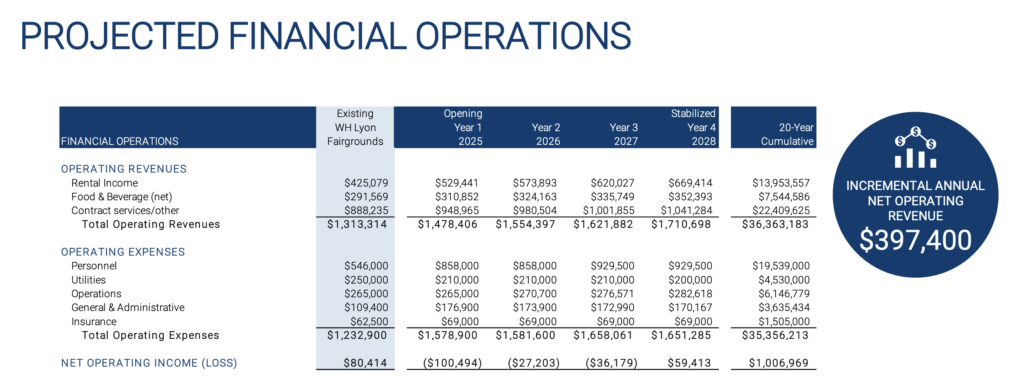Minnehaha County makes a little money on the W.H. Lyon Fairgrounds. If the county invests in the improvements laid out in the new economic study of its facility, Minnehaha County would make a little less each year.

Right now, the W.H. Lyon Fairgrounds draws $1.31 million in revenue each year. The fairgrounds cost $1.23 million to operate. The county thus nets a bit over $80K, about 6% profit. Study consultant/authors CSL International and Charles D. Smith note that the Sioux Empire Fair keeps the fairgrounds in the black; without the fair, fairground expenses would outrun revenue by $120K.
It’s worth noting that Minnehaha County government does not get any boost from sales tax at fairground events. The fairgrounds generate $1.1 million for the state in sales tax, $496K in sales tax for Sioux Falls city government, and another $311K for Sioux Falls in tourism and BID tax, but the county gets not one penny in direct tax benefit from the fairgrounds to support its budget. So from a budgeting perspective, all that matters to Minnehaha County government is fairground operating costs and revenue.
The consultants propose upgrading the Expo building, grandstand, and other parts of the fairgrounds to draw more events and more money. The study projects that investing $100 million in better fairground facilities would immediately boost tax revenues for the city and state and by year 4 produce 27% more tax revenue.
But the county would see no such gain. The county would see higher operating costs that would put the fairground budget in deficit for the first three years. The fairgrounds would return to profitability in year 4, but at a level 26% below the current profit.
The city and state make 27% more money, while the county makes 26% less—wow! The Minnehaha County Commission would have to be an awfully generous, civic-minded group to take that deal instead of just lawyering up and selling the fairgrounds to the Knife River quarriers.